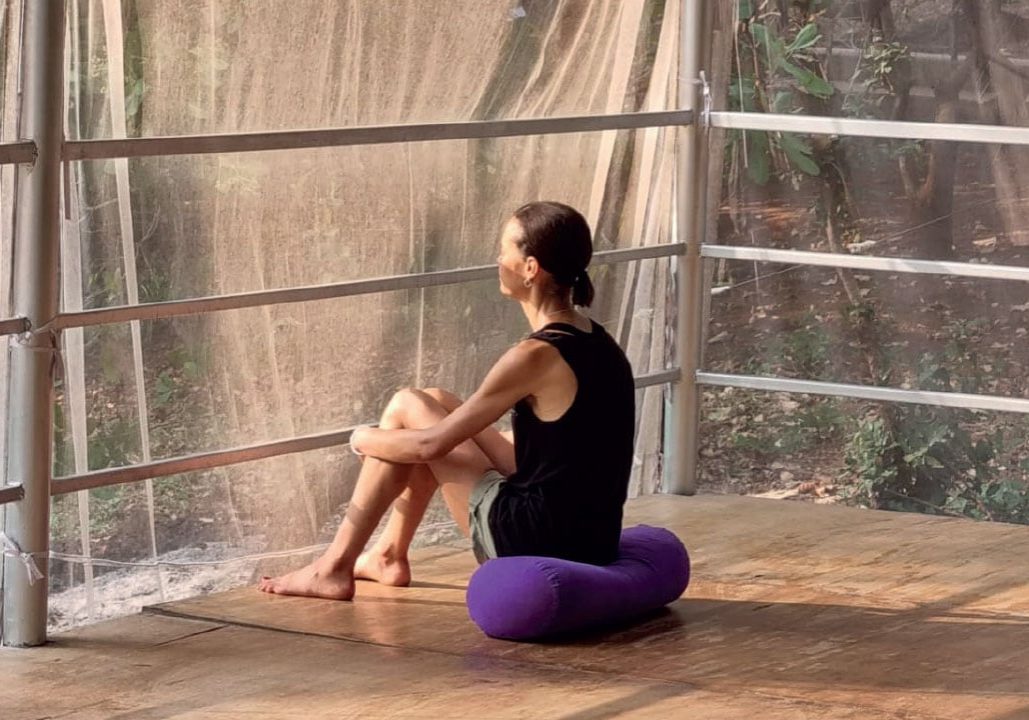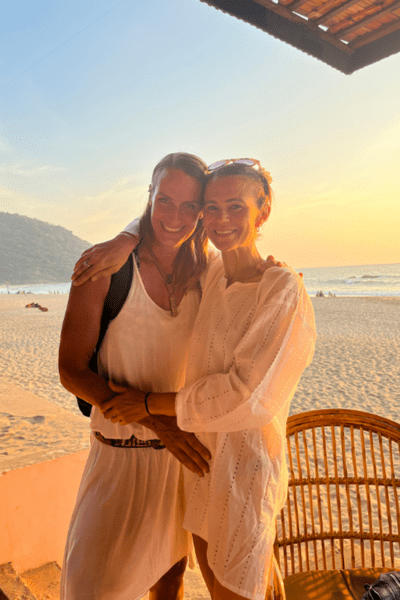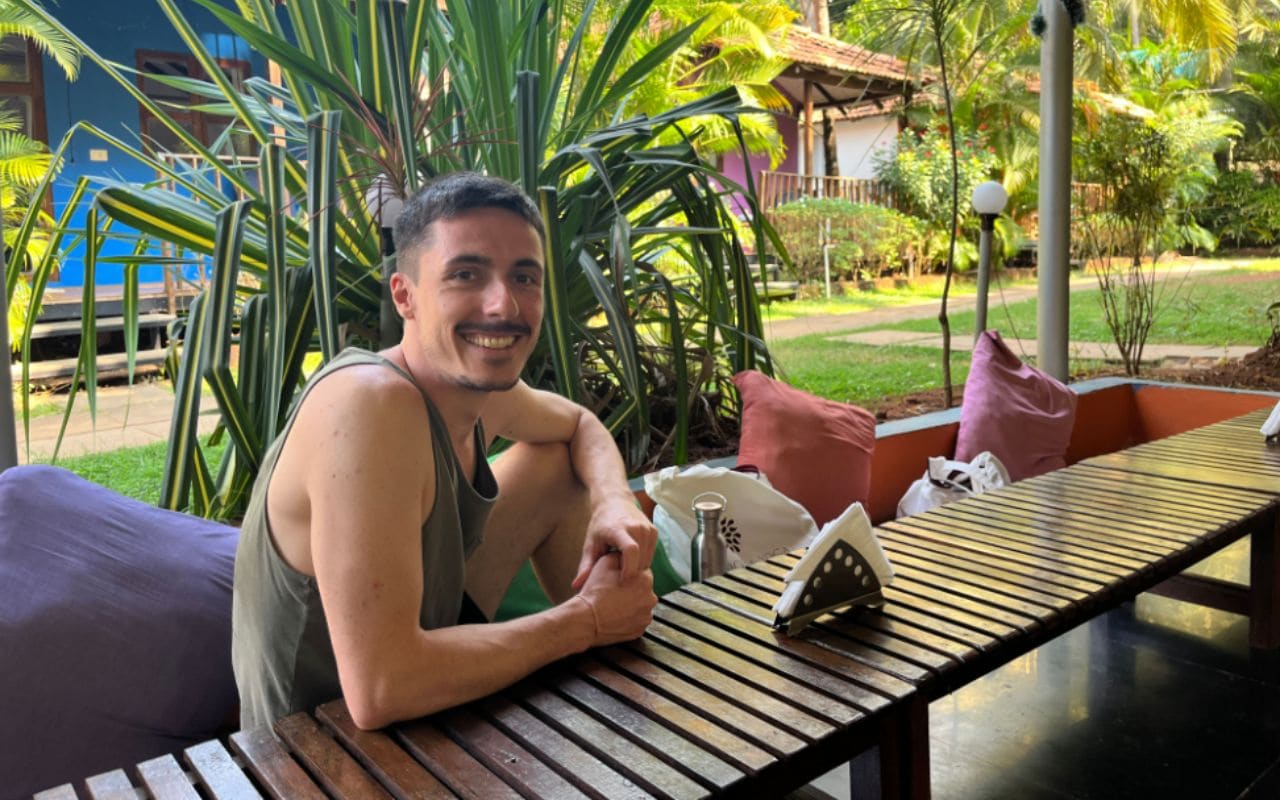
Reconnecting to your yoga practice... after a pandemic
Millions worldwide experienced feelings of isolation and disconnection in the wake of the dreaded lockdowns. Here, Simone Scott shares her story of how she rediscovered her love for her yoga practice and teaching, and shares tips on how you can reconnect too
Disconnected
I’d been feeling somewhat disconnected from yoga – both my own practice and my teaching – and perhaps more worryingly, from my own body in general, for some time. In the post-pandemic world this accelerated into overdrive, leaving me feeling stuck in my own head and seemingly unable to get out. I was fighting with myself to find solutions which only served to exacerbate the situation; adding an unhelpful layer of frustration and self-flagellation at my self-perceived inability to manage something that I felt ‘should’ be simple.
Reflecting on this, my lack of self-compassion feels so unkind, though that’s a great realisation in itself. Yet things had been so different; whilst I sorely missed the real-life richness of in-person teaching and practicing that was swiftly taken away during the pandemic, I did enjoy having this time and space to immerse, explore and play – experiencing new practices and connecting in different ways. I particularly remember one online yin session with Ilse Sobering from House of Inner Power Yoga (@houseofinnerpower) where I joined a group of grateful others, practicing in true harmony: 90 minutes passing in a flash and feeling genuinely sad when it ended as I felt so in tune with my own body and mind, and truly connected with every other person in the ‘room’.
You're not alone
Whilst many waxed lyrically about their post-pandemic positive realisations and life changes – inspiring stories of turning new-found or re-discovered talents into careers and abandoning previous and less-enriching ways of living – concerning anecdotes from others with similar experiences to mine would occasionally, almost apologetically, rise above the blur of opportunity-grabbing ‘good news’ accounts that only served to make me feel guilty, useless and unworthy.
So whilst offering an opportunity for positive change for many, the effects of those pandemic years left others emerging into their new worlds feeling physically, mentally, spiritually and emotionally disconnected.
Basti Hausch, a marketing director and yoga teacher from Frankfurt, Germany (@baha_yoga), talks of his experience, which began when he noticed friends in his yoga community becoming self-professed ‘professionals in medicine’ with strong, and often unhelpful views on the virus. "This gave me a weird taste of some of the people I’d learned from and so I stopped teaching yoga and stepped out of that world,” he says.
A slow return to resuming classes as a student was short-lived, with Hausch contracting the virus during what he’d hoped to be a heavily yoga-influenced holiday to Bali, leaving him unwell for weeks. The situation snowballed on his return, as he admitted he “became lazy”, and unable to muster the motivation to return, having lost the routine that had previously been the source of so much joy. “I felt low. I felt that my physical body and soul were no longer aligned. Every movement, every decision, almost everything I tried to do felt exhausting.”
Hard to hear, though words that may resonate with so many: focus turned inwards, connection with others and the outer world withdrawn, joy on hold.
Positive steps
Whilst it took time to process the experiences, it became clear that I was burnt out. But my resolve to reconnect with myself thankfully remained. I felt a need to completely immerse myself in yoga again, and with fond memories of just how much I’d enjoyed my previous experiences of teacher training I decided to repeat the experience, signing up to the 300 hour vinyasa flow training at Sampoorna Yoga in India (@sampoorna_yoga).
Despite already being an experienced and 500-plus hours qualified teacher, I granted myself ‘permission’ to approach the experience through the eyes of a beginner. Whilst I counted my blessings at being in the fortunate position to be able to do so, I felt I owed this to myself and to those I count myself lucky to teach.
Accepting where you are
Noticing the situation and acknowledging where you are is the first step. Yet the realisation may take time, which may be due to a lack of awareness or even feeling scared and trying to battle on.
Edinburgh-based solution-focused psychotherapist and author Gin Lalli (ginlalli.com) has helped many clients overcome similar experiences, seeing a sharp increase in cases resulting from the damaging effects of the post-pandemic emergence. Describing this as the ‘freeze’ response, in which the primitive brain seeks to protect by withdrawing until the perceived danger (and the pandemic was most certainly a huge red flag to that part of the brain) has passed.
With her clients, this freeze manifested as dissociation and disconnection – disconnection with passions and interests that once provided such joy, with those with whom they would usually have enjoyed interactions, and also with their own bodies.
“Whilst the intellectual brain knows these things can bring joy, the primitive brain takes over, catastrophising that everything will be a disaster — and why would it let you do that? By dissociating, it separates you from that,” she says.
For Basti Hausch, the realisation came following a very honest chat with his partner who had become increasingly concerned at his disconnection: “He tried to motivate me for some time, but the more he tried, the less I did.” That said, his partner’s words and the clear anguish this was causing for his partner were enough for him to accept the situation; offering that ‘penny drop’ moment that something wasn’t right and that he was ready to start the journey of reconnection. Like me, Basti Hausch also chose Sampoorna to take those tentative first steps.
Coming out of the other side
While some may be lucky and see rapid changes, recognising that reconnecting is unlikely to be a linear process is key. With time and patience there should be chinks of light and penny drop moments where realisations are made, and it’s important to catch, savour and celebrate those moments, no matter how fleeting and small they may seem.
For me, the first came during a morning meditation session – and not during an asana practice as I’d assumed it might — making the experience quite unexpected and perhaps more impactful. Time became insignificant as I felt every sensation in my body; a physical connection with the ground, a visualisation of my heart pulsating, the gentle sound of my breath. Absolute bliss.
The second came later, during a physical practice where I felt as though I was immersed in a beautiful dance, completely lost in the sensations of my own body: a ripple along my spine, a flick of my wrist, a shimmy across my shoulders to ease and glide in ways that felt graceful and gleeful.
Hausch beautifully describes his initial moment of reconnection which occurred at a time when he least expected it during his own Sampoorna quest: “I walked to my room after a class and suddenly noticed how nice it felt to walk. To feel my legs moving, one step after another. I was in the moment – not somewhere else.” This has, thankfully, continued and he now feels ready to return: “I want to teach again and share what yoga has helped me with in terms of emotional stability and physical fitness.”

Seeds of hope
As a professional, Gin Lalli encourages those she works with to start with small steps and, using the example of resuming a yoga practice, says: “Don’t try to start with an hour, set yourself the goal of five minutes and that’s it. If you manage five minutes – that’s fantastic! In my work we make a big deal of the small things. Celebrate the small things and they will become something bigger.” Words of reassuring comfort that should help to plant some small and realistic seeds of hope.
Jennifer Hoessler, a sports and gymnastic teacher, sports actor, and senior yoga teacher at Sampoorna (@jenmirih) was one of the vital pieces in the jigsaw that helped me to begin my journey of reconnection. She speaks of providing her students with the time, space, and non-judgementalism – gently encouraging them to allow the same for themselves — to open the doors to transformation, particularly in the wake of emerging in this new and forever changed world. “As soon as you push, the doors close. Give space, without judgement, and at some point things will start to open up.”
I’ve learned to give myself this time and space, stepping back – without judgement – to check in with myself and to recognise when I’m beginning to disconnect, recognising that inner fight before it escalates into a full-on brawl.

Becoming your own best mate
While it may not come naturally — especially during those difficult early days — pausing to check in and to apply a liberal dose of self-compassion will provide a solid and loving foundation to give the wonderful things you deserve the essential sustenance they need to grow and flourish.
Go gently and take time to explore, observe and play. Immerse yourself in those chinks of lights, celebrate the small wins, and learn lessons – from the positives and the hiccups – that unfold along the way.
A student recently shared his experience of emerging from his own dark period of disconnection, explaining how he’d learned to be his own ‘best mate’.
So here’s to us all becoming our own best mates: kind, patient, present and connected. Wishing you so much luck and many a small win on your journey.
Simone Scott is a yoga teacher and writer. Follow her journey @simsspace




